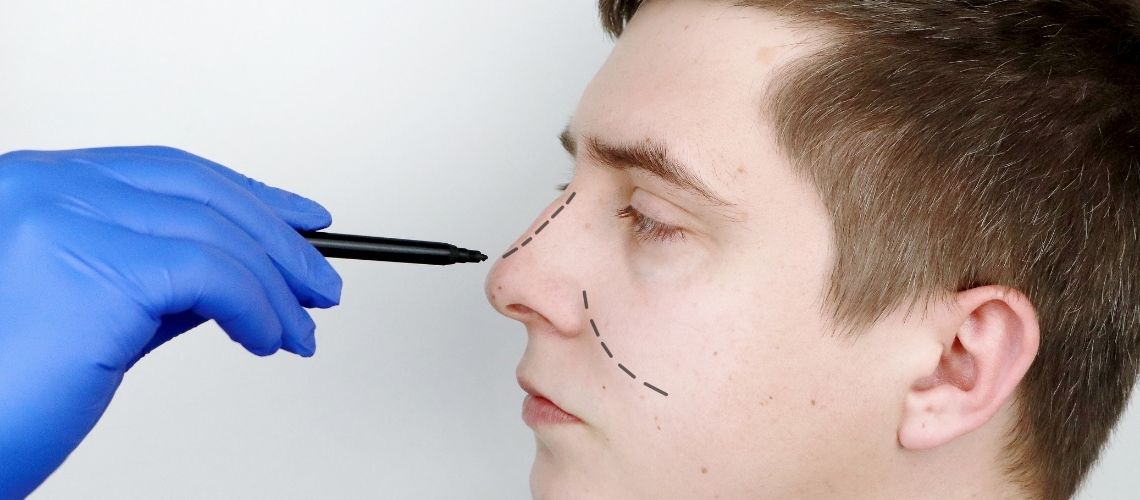The procedure for correcting a hump nose is applied to solve aesthetic issues caused by protrusions on the nasal bridge. This procedure involves correcting the bone and cartilage structures on the nasal bridge. Using aesthetic surgical techniques, excess bone and cartilage structures on the nasal bridge are removed. The procedure smooths the nasal profile, providing a more aesthetic appearance. Additionally, this method can also improve nasal functions. The surgery is usually performed under general anesthesia. During the procedure, the following steps are followed:
- Careful removal of bone and cartilage structures,
- Cutting the free edges of the bone to bring them closer together,
- Applying a cast or splint to preserve and support the shape of the nose,
After the procedure, the splint is usually kept for 10 days to allow the nasal structure to heal and stabilize. This process helps patients achieve a better nasal structure both aesthetically and functionally.
Table of Content
Benefits of Hump Nose Surgery
A hump nose correction offers several aesthetic and functional benefits. Firstly, this surgery allows for a smoother and more proportional nasal structure. Aesthetically, this helps facial features appear more harmonious. Furthermore, significant improvements in breathing function are often observed after surgery.
- Correction of nasal structure
- Improvement in breathing function
- More aesthetic facial appearance
Another important advantage of this operation is the high rate of positive results experienced after surgery. Patients often report that their nose looks smoother and that their breathing comfort has increased post-operation. These benefits significantly enhance the quality of life for individuals undergoing hump nose correction.
Procedure and Post-Procedure of Hump Nose Correction
In hump nose correction, the rasping method is used for minor humps, while the upper parts of the bone and cartilage structure are removed for larger humps. At this stage, it is necessary to bring the free edges of the bones closer together. This procedure is completed by cutting the lower parts of the nasal bone and making it movable. After the surgery, the nose is stabilized with a splint, which is typically removed after 10 days.
Pre-Surgery Process:
- Avoid eating and drinking 6 hours before the surgery as general anesthesia will be applied.
- Do not use blood-thinning medications or herbal teas.
- Inform your doctor about any regular medications you take.
- Stop alcohol and smoking at least 1 week before surgery.
- Avoid sun exposure.
- Be makeup-free on the day of surgery and wash your face with antibacterial soap.
Post-Surgery Process:
- Bruising, swelling, and edema on the face and nose are normal and usually subside within a week.
- Painkillers should be used as advised by your doctor.
- Sleeping on your back with your head elevated can help reduce swelling and edema.
- You can resume daily activities after the first week.
- The recovery process generally takes between 6 months to 1 year.
- Do not wear glasses for the first 3 months post-surgery; you can start wearing lenses after 3 days.
These details help patients be informed and well-prepared for the hump nose correction process.

1976 yılında İzmir’de doğan Prof. Dr. Murat Songu, İzmir Atatürk Lisesi sonrası 1994 yılında Ege Üniversitesi Tıp Fakültesi’ne girdi. Kulak Burun Boğaz Hastalıkları uzmanlık eğitimini Celal Bayar Üniversitesi’nde tamamladı. 5 Eylül 2014 tarihinde Ankara Dışkapı Yıldırım Beyazıt Hastanesi’nde yapılan sözlü sınavı ile “Kulak Burun Boğaz Hastalıkları Doçenti” olmaya hak kazandı. Türk Kulak Burun Boğaz ve Baş Boyun Cerrahisi Derneği Bursu’nu kazanarak Şubat 2016 – Mayıs 2016 tarihleri arasında Amerika’da Pittsburgh şehrinde UPMC (University of Pittsburgh Medical Center)’da Robotik Cerrahi Ünitesi’nde çalıştı. 2 Nisan 2021 tarihinde “Kulak Burun Boğaz Hastalıkları Profesörü” olmaya hak kazandı. Evli ve iki çocuk (Ayşe Songu, Selim Songu) babasıdır.




